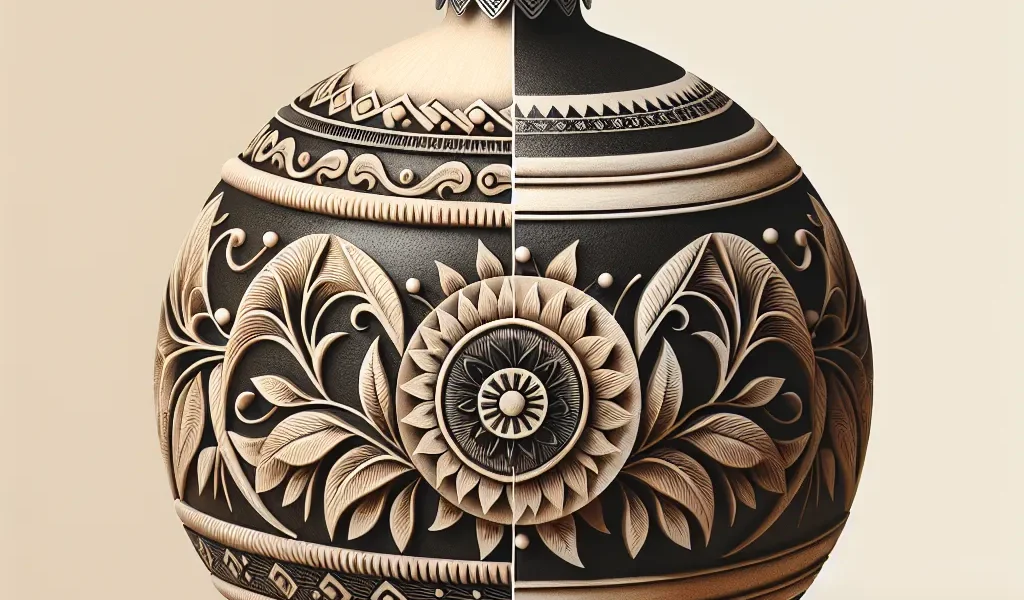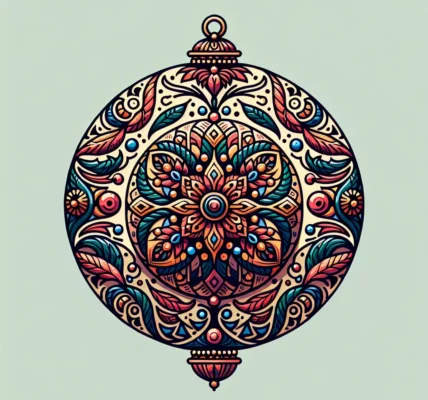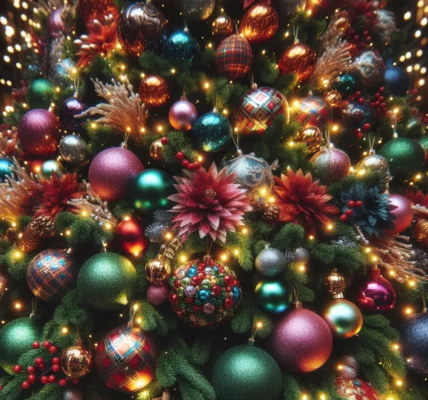Baubles Through the Ages: A Historical Overview
When we think of baubles today, we often picture colorful, sparkly ornaments adorning our Christmas trees. However, the history of baubles stretches back to ancient times, where they served as more than just festive decorations. Baubles, also known as trinkets or knick-knacks, have evolved over the centuries, taking on different forms and cultural significances.
In ancient civilizations such as the Egyptians, Greeks, and Romans, baubles were crafted from materials like glass, metal, and precious stones. These ornaments held symbolic meanings, often associated with religious rituals, status, or protection. In medieval Europe, baubles adorned not only the nobility but also religious artifacts, adding to their spiritual and aesthetic value.
The Industrial Revolution marked a turning point for baubles, as mass production led to more affordable and varied designs. The Victorian era popularized the use of baubles in home decor, with delicate glass ornaments becoming a staple of Christmas festivities. Fast forward to the present day, and baubles have become an essential part of holiday traditions worldwide, with modern designs ranging from traditional glass spheres to quirky, personalized baubles.
Understanding the evolution of baubles offers insight into the cultural, artistic, and technological shifts that have shaped these decorative trinkets. From their humble beginnings as symbols of ancient civilizations to their contemporary role in adding festive cheer to our homes, baubles continue to captivate us with their history and craftsmanship.
The Influence of Culture on Bauble Evolution
The evolution of baubles, from ancient ornaments to modern decor, has been greatly influenced by different cultures throughout history. These decorative items have been shaped by the beliefs, traditions, and artistic styles of various societies, resulting in a rich tapestry of designs and materials.
In ancient times, baubles were often crafted from natural materials such as wood, leaves, and animal bones, reflecting the connection to nature and the spiritual beliefs of early cultures. These ornaments were used in religious rituals, as talismans for protection, and as symbols of status and wealth.
As civilizations expanded and interacted with one another, the exchange of ideas and trade routes played a significant role in the evolution of baubles. The incorporation of precious metals, gemstones, and intricate designs into these ornaments reflected the cultural exchange and the growing emphasis on craftsmanship and luxury.
In more recent history, the industrial revolution led to mass production of baubles, making them more accessible to people from different socioeconomic backgrounds. This democratization of baubles allowed for the blending of diverse cultural influences, resulting in eclectic designs that drew inspiration from traditions across the world.
In the modern era, globalization has further influenced the evolution of baubles, as contemporary designers draw inspiration from a myriad of global cultures to create ornaments that resonate with a diverse and interconnected world. From traditional Christmas tree baubles to decorative elements in various cultural ceremonies, the influence of culture continues to shape the evolution of baubles, enriching the tapestry of decorative arts with unique and meaningful designs.
By understanding the role of culture in bauble evolution, we gain a deeper appreciation for these decorative items and their significance in reflecting the diversity and creativity of human societies throughout history.
Modern Trends in Bauble Design
Modern trends in bauble design have evolved significantly, incorporating a diverse range of materials, styles, and inspirations. Contemporary baubles are no longer limited to traditional shapes and motifs, but instead they embrace innovation and creativity, reflecting the dynamic nature of design in the 21st century.
One prominent trend in modern bauble design is the fusion of traditional and minimalist aesthetics. Designers often combine classic elements such as metallic finishes, intricate patterns, and vintage-inspired shapes with clean lines and simple forms. This blend of old and new creates baubles that are both nostalgic and sleek, appealing to a wide audience with varying design preferences.
Another noteworthy trend is the emphasis on sustainability and eco-conscious design. As environmental awareness grows, many designers are utilizing recycled materials, natural elements, and eco-friendly production methods to create baubles that not only exude style but also minimize their environmental impact. This eco-friendly approach resonates with consumers who prioritize ethical and sustainable purchasing practices.
Furthermore, modern bauble design often draws inspiration from global cultures, resulting in a rich tapestry of diverse influences. From Scandinavian minimalism to intricate Middle Eastern patterns, and from bold African textiles to delicate Asian motifs, contemporary baubles celebrate the richness of global design traditions. This cross-cultural exchange not only adds depth and vibrancy to bauble design but also promotes cultural appreciation and understanding.
In addition, technology has played a significant role in shaping modern bauble design. Advanced manufacturing techniques, 3D printing, and digital design tools have expanded the possibilities for creating intricate and complex baubles, pushing the boundaries of traditional craftsmanship and enabling designers to bring their imaginative concepts to life.
As the evolution of baubles continues, modern design trends consistently push the boundaries, offering a diverse array of styles, materials, and influences. From the fusion of traditional and minimalist aesthetics to the embrace of sustainability, global inspirations, and technological advancements, modern bauble design reflects the dynamic and ever-changing landscape of contemporary design.
From Ornamentation to Decoration: The Transformation of Baubles
From ancient ornaments to modern decor, baubles have undergone a fascinating evolution, transitioning from being primarily ornamental to serving as decorative elements. In ancient times, baubles were often symbolic, carrying cultural significance and serving as talismans or amulets. These early baubles were crafted from natural materials such as feathers, bones, and stones, and were believed to possess mystical properties.
As societies evolved, so did the role of baubles. With the emergence of metalworking and craftsmanship, baubles became more intricate and ornate, adorning royalty and nobility. However, it wasn’t until the modern era that baubles truly transformed into the decorative objects we are familiar with today. The Industrial Revolution brought mass production and accessibility, allowing baubles to become widely available as decorative elements for the general public.
Today, baubles are synonymous with festive decorations, especially during the holiday season. They come in a variety of materials, shapes, and colors, adding a touch of whimsy and charm to homes and events. Whether hung on Christmas trees or incorporated into everyday decor, baubles have transcended their original symbolic purpose to become versatile and aesthetically pleasing decorations.
Understanding the evolution of baubles from ornamentation to decoration provides valuable insight into the cultural, artistic, and technological advancements that have shaped our modern perceptions of these charming adornments.




